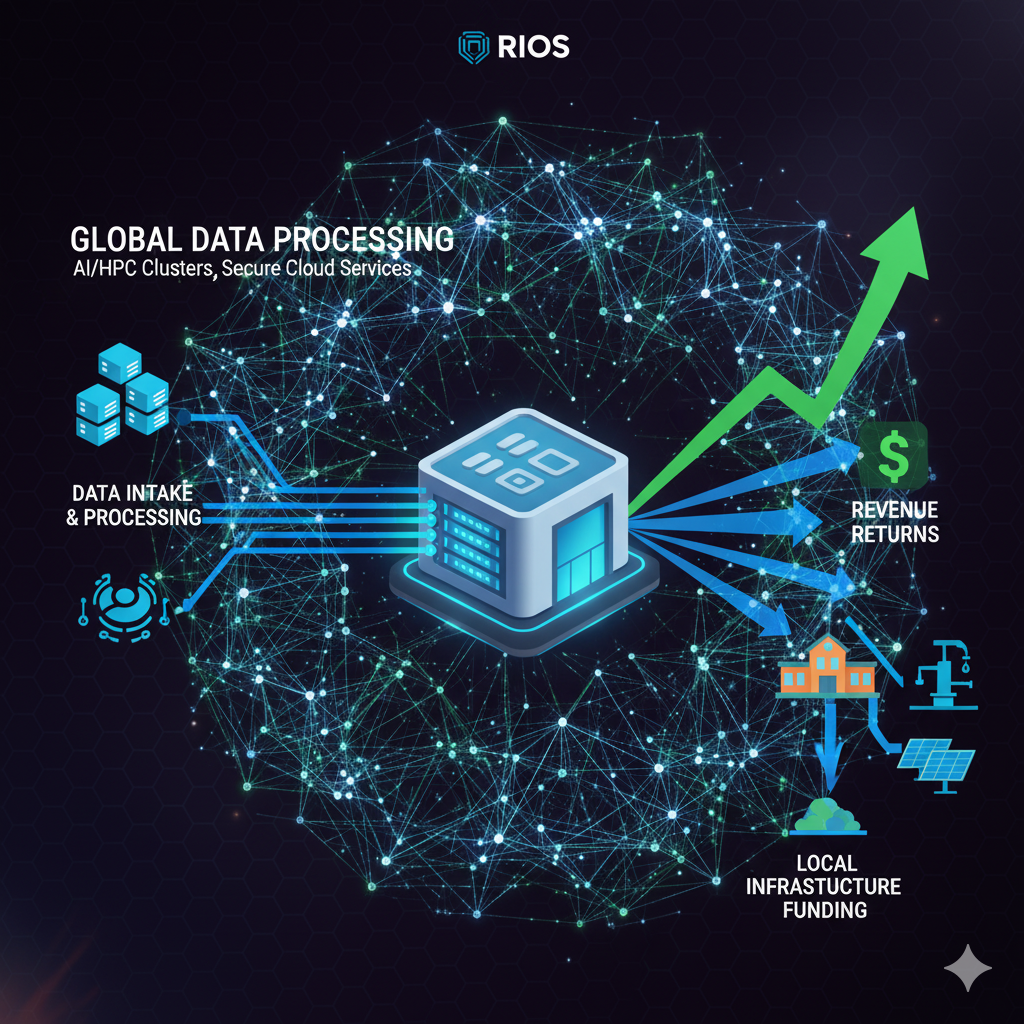
A Detailed Report on the Rural Infrastructure Operating System (RIOS)
The Rural Infrastructure Operating System (RIOS), a flagship initiative of the AI-focused firm DeReticular, is a comprehensive platform designed to revolutionize the economic and technological landscape of rural and post-conflict regions. By integrating artificial intelligence, resilient infrastructure, and advanced connectivity, RIOS aims to transform traditionally underserved areas into self-sustaining, economically vibrant communities. This report provides a detailed overview of the core components of the RIOS ecosystem: RIOS Campus, RIOS Mobile, and the integration of RIOS with Starlink technology.
RIOS Campus: An Engine for Economic Sovereignty
The RIOS Campus is the foundational element of the Rural Infrastructure Operating System, conceived as an AI-native economic engine rather than a mere collection of hardware.[1] Its primary objective is to establish economic and infrastructure sovereignty for the communities it serves, moving them away from reliance on external subsidies and creating a sustainable cycle of development.[1]
Core Components and Functionality:
At the heart of every RIOS Campus is a Core Compute Cluster, a high-performance computing system designed to process high-demand global AI workloads.[1] This cluster serves as the primary revenue-generating component of the system, with the income produced being reinvested to fund and maintain the local infrastructure.[2] This innovative model turns infrastructure from a cost center into a revenue-generating asset.
The RIOS Campus is a modular and scalable system that integrates several key technologies through strategic partnerships:
- Connectivity: The official connectivity layer is provided by Trifi Wireless, which utilizes patented vSIM technology to ensure reliable and redundant internet access.[1]
- Power Generation: In partnership with Agra Dot Energy, RIOS Campuses are designed for energy sovereignty, with the capability to leverage local resources for power generation.[1]
- Logistics and Data Collection: The system is designed to integrate with logistics networks, where vehicles can act as mobile sensors, collecting data that is fed back into the RIOS AI to optimize services and create a “data flywheel effect.”[2]
The RIOS Campus is available in different configurations, such as the RIOS 15 and the more robust RIOS 30, both centered around the Core Compute Cluster.[1]
RIOS Mobile: Extending Connectivity and Autonomy
Distinct from other entities using the “RIOS” acronym for radio interoperability systems, DeReticular’s RIOS Mobile is a product line focused on providing “sovereign connectivity” and off-grid capabilities for mobile platforms. This system is structured in a tiered approach to offer scalable solutions:
- Pillar I: The Trifi “Never Fail” Essential Kit: This entry-level solution focuses on ensuring reliable internet uptime through intelligent multi-carrier redundancy.
- Pillar II: The Sovereign Connectivity Pro Kit: A more advanced offering that includes enterprise-grade SD-WAN, combining satellite internet with multi-carrier cellular service for robust and resilient connectivity.
- Pillar III: The Mobile RIOS Off-Grid Command Center: The highest tier, this system transforms a mobile platform into a fully autonomous RIOS Campus Node by integrating connectivity with resilient power and decentralized computing.
RIOS Starlink: Mission-Critical Mobility and Unbreakable Connectivity
The integration of Starlink technology into the RIOS ecosystem is officially manifested in the RIOS Starlink Roam Kit. This kit serves as the high-performance satellite terminal for the RIOS-Mobile product line, providing a crucial high-speed data connection for operators in areas far beyond the reach of traditional networks.[1]
Key Features and Integration:
The RIOS Starlink Roam Kit is engineered for portability and in-motion use, featuring a satellite dish with a wide field of view and enhanced GPS capabilities to maintain a strong connection even at high speeds.[1] The kit includes the Starlink dish, a power supply/router, and all necessary cables and a base.[1]
Crucially, within the RIOS-Mobile architecture (specifically Pillar II and III), the Starlink Roam Kit is not a standalone solution. It functions as the primary connection within a sophisticated SD-WAN (Software-Defined Wide Area Network) system. This system intelligently fuses the satellite link with a multi-carrier Trifi cellular connection. The result is an “unbreakable” connection, as the system can instantaneously and silently failover to the cellular backup if the satellite signal is obstructed, eliminating dropped calls and ensuring a continuous data flow.[1]
In conclusion, the Rural Infrastructure Operating System, through its Campus, Mobile, and Starlink-integrated components, presents a holistic and ambitious approach to rural development. By leveraging AI-driven revenue generation, resilient infrastructure, and cutting-edge connectivity, RIOS is designed to empower underserved communities with the tools for a prosperous and self-reliant future.
Sourceshelp

